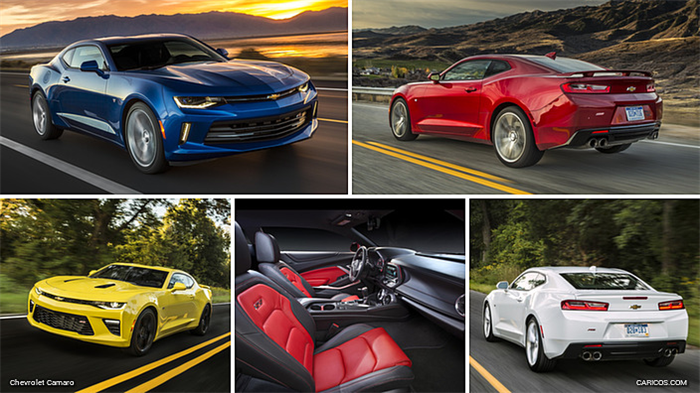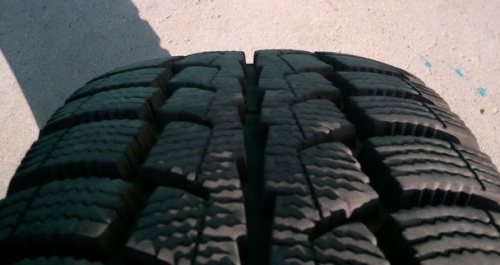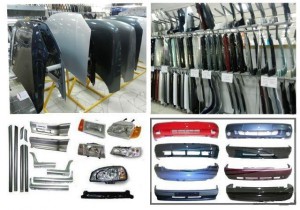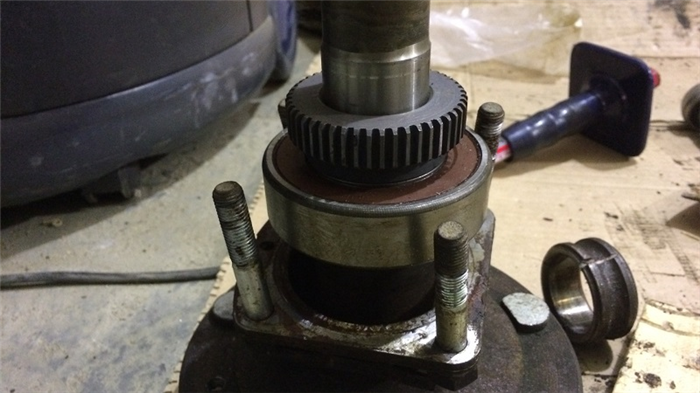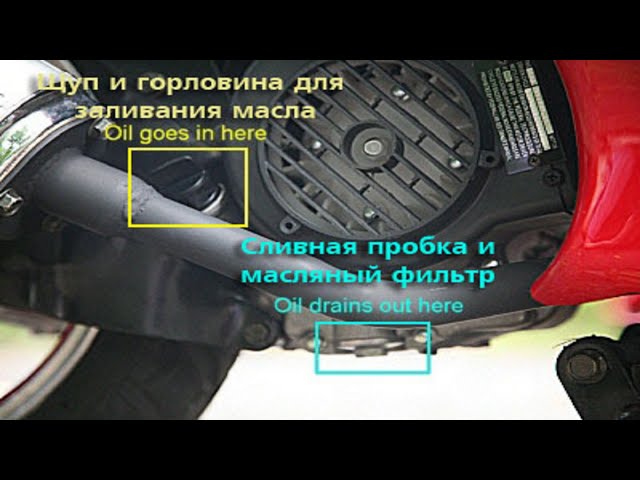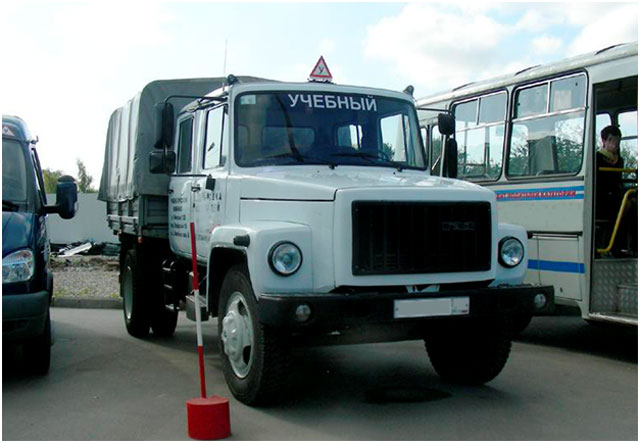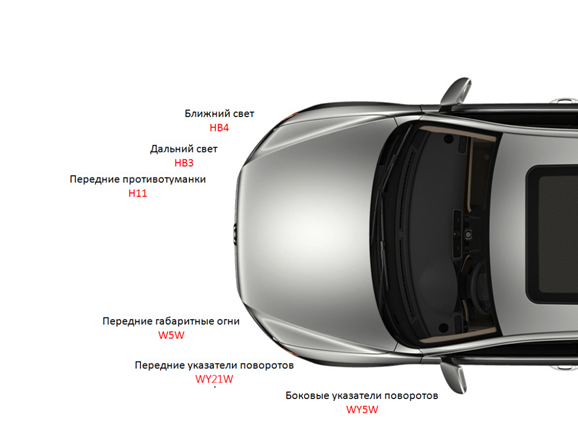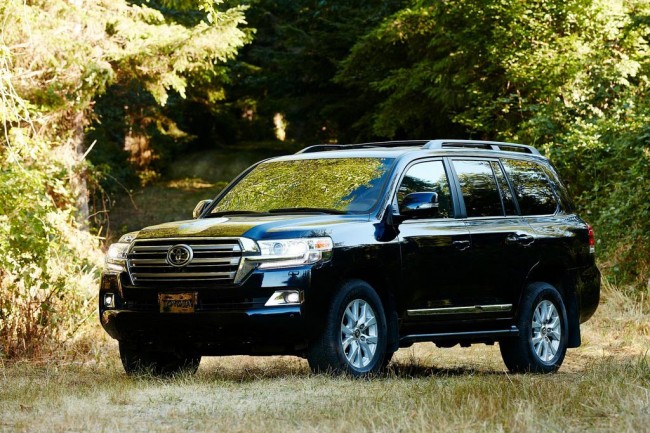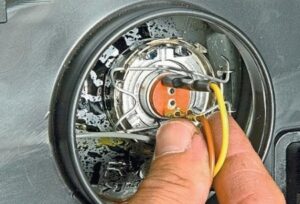Chevrolet camaro ss 2016
The sixth-generation Chevrolet Camaro revealed today offers higher levels of performance, technology and refinement and is designed to maintain the sporty car segment leadership earned over the past five years.
The Gen Six Camaro provides a faster, more nimble driving experience, enabled by an all-new, lighter architecture and a broader powertrain range. Six all-new powertrain combinations are offered, including a 2.0L Turbo, an all-new 3.6L V-6 and the LT1 6.2L V-8, which is SAE-certified at 455 horsepower (339 kW) and 455 lb-ft of torque (617 Nm) – for the most powerful Camaro SS ever. Each engine is available with a six-speed manual or eight-speed automatic transmission.
Camaro’s leaner, stiffer platform and slightly smaller dimensions are accentuated by a dramatic, sculpted exterior. Meticulously tuned in the wind tunnel, the exterior contributes to performance through reduced aerodynamic lift for better handling while enhancing efficiency.
A driver-focused interior integrates class-leading control technologies, including a new Driver Mode Selector, configurable instrument cluster and a customizable ambient lighting feature.
“Redesigning the Camaro is thrilling and challenging all at once, but the secret is to offer something more,” said Mark Reuss, General Motors executive vice president of Product Development. “For Camaro enthusiasts, it retains iconic design cues and offers even more performance. For a new generation of buyers, the 2016 Camaro incorporates our most innovative engineering ideas with finely honed performance and leading design.”
Only two parts carry over from the fifth-generation Camaro to the new Gen Six: the rear bowtie emblem and the SS badge.
To make it not only the best Camaro ever, but one of the best performance cars available, Chevrolet focused on three pillars of development:
Performance
- Vehicle mass has been reduced by 200 pounds or more, depending on the model, creating a more nimble, responsive driving experience
- Most efficient Camaro ever, with a new 2.0L turbo SAE-certified at 275 hp (205 kW) and 295 lb-ft (400 Nm) – and delivers more than 30 mpg on the highway (GM-estimated), and 0-60 mph acceleration well under 6 seconds
- Efficient performance in a new 3.6L V-6 featuring direct injection, continuously variable valve timing and – for the first time – Active Fuel Management (cylinder deactivation), offering an SAE-certified 335 hp (250 kW) and 284 lb-ft of torque (385 Nm), for the highest specific output of any naturally aspirated V-6 in the segment
- The most powerful Camaro SS ever, with a new 6.2L LT1 direct-injected Small Block V-8 rated at 455 hp (339 kW) and 455 lb-ft of torque (617 Nm)
- Magnetic Ride Control active suspension available on Camaro SS for the first time
- With improved handling and performance, the Camaro SS delivers better lap times than the fifth-generation’s track-focused Camaro 1LE package.
Technology
- All-new Drive Mode Selector, which tailors up to eight vehicle attributes for four modes: Snow/Ice, Tour, Sport and – on SS models – Track settings
- Segment-exclusive, Interior Spectrum Lighting that offers 24 different ambient lighting effects on the dash, door panels, and center console
- High-definition, configurable color displays – including available dual, 8-inch-diagonal screens.
Design
- More athletic-looking, sculptured exterior that complements the tighter, leaner architecture – and offers all-new, modern lighting signatures, including light-emitting diode (LED) technology
- Greater emphasis on customer personalization with wider range of choices, including 10 exterior colors, five interior color combinations, lighting options and a full complement of dealer-available accessories available at launch – including wheels, stripe packages and additional accessories
- Aerodynamically optimized design that is the result of 350 hours of wind tunnel testing, reducing drag on LT models and improving downforce on SS
- All-new, interior with shifter-focused center console, intuitive controls, flat-bottom steering wheel, and higher quality materials throughout
- Unique control rings around the air vents used for temperature and fan speed adjustments, eliminating the need for conventional buttons
“We have had the incredible opportunity to meet literally thousands of Gen 5 Camaro owners who provided direct feedback on what they loved about their car and what they wanted for the next-gen Camaro,” said Al Oppenheiser, Camaro chief engineer. “As a result, the 2016 Camaro builds on what made the current Camaro such a success with more power, more agile handling and more technology.
“We expect it will set the new benchmark in the segment – and give a new generation of enthusiasts a reason to fall in love with Camaro.”
The Gen Six Camaro goes on sale later this year, offered in LT and SS models.
Lightweight architecture and chassis systems
Approximately 70 percent of the architectural components are unique to Camaro. Through extensive computer-aided engineering, structural rigidity was increased by 28 percent, while the body-in-white mass was reduced by 133 pounds (60.5 kg).
In their quest to make the 2016 Camaro as lean as possible, engineers and designers evaluated every aspect of its architecture – already the most mass-efficient ever created by GM – and supporting elements, saving grams here and pounds there that contributes to the car’s lower curb weight. As a result, the total curb weight for Camaro has been reduced by more than 200 pounds (90 kg).
Significant weight savings came from using an aluminum instrument panel frame instead of steel, which saved 9.2 pounds (4.2 kg). The use of lightweight components, including aluminum front suspension links and steel rear suspension links with lightening holes, in the new five-link rear suspension system contributed to a 26-pound (12 kg) reduction in the overall suspension weight. With the lighter, stiffer architecture and more powerful engines, the Gen Six Camaro SS delivers better lap times than the fifth-generation’s track-focused Camaro 1LE package.
“The driving experience is significantly different,” said Aaron Link, lead development engineer. “Immediately, you will notice how much lighter and more nimble the Camaro feels. That feeling increases when you drive the Camaro harder – it brakes more powerfully, dives into corners quicker, and accelerates faster than ever.”
The Camaro features a new, multi-link MacPherson strut front suspension with Camaro-specific geometry. The double-pivot design provides a more precise feeling of control, including more linear and communicative feel from the quick-ratio electric power steering system. At the rear, a new five-link independent suspension yields outstanding wheel control and reduces “squat” during acceleration.
In addition, the Magnetic Ride Control is available on the Camaro SS for the first time. Previously limited to the Camaro ZL1, the active suspension reads road and driving conditions 1,000 times per second, and automatically adjusts the damper settings to optimize ride comfort and control.
All Camaro models offer Brembo brakes – they’re standard on SS – optimized for the car’s mass and performance capability. On Camaro LT, the available brakes include 12.6-inch (320 mm) front rotors with four-piston calipers and 12.4-inch (315 mm) rear rotors with single-piston sliding calipers. Camaro SS employs 13.6-inch (345 mm) front rotors with four-piston fixed calipers and 13.3-inch (338 mm) rear rotors with four-piston fixed calipers.
Goodyear tires are used on all models: The LT features standard 18-inch wheels wrapped with Goodyear Eagle Sport all-season tires and available 20-inch wheels matched with Eagle F1 Asymmetric all-season run-flat tires. Camaro SS features standard 20-inch aluminum wheels with Eagle F1 Asymmetric 3 run-flat tires.

Chevrolet Camaro
More powerful and efficient
The new Camaro will be offered with six different powertrain combinations, each designed to deliver improved performance and efficiency.
The Camaro LT’s standard engine is a new 2.0L Turbo, rated at an SAE-certified 275 horsepower (205 kW) and 295 lb-ft of torque (400 Nm). For power on demand, it offers a wide torque band with 90 percent of peak torque available from 2,100 rpm to 3,000 rpm, and maximum torque from 3,000 to 4,500 rpm. The 2.0L turbo will deliver 0-60 mph acceleration in less than six seconds and offer more than 30 mpg on the highway (GM-estimated), making it the most fuel-efficient Camaro ever.
An all-new 3.6L V-6 is available in the Camaro LT, producing and SAE-certified 335 horsepower (250 kW) and 284 lb-ft of torque (385 Nm), for the highest specific output of any naturally aspirated V-6 in the segment. The engine incorporates a trio of technologies for uncompromised efficiency and performance, including direct injection, variable valve timing and, for the first time, Active Fuel Management (cylinder deactivation), which disables two cylinders under light throttle applications to enhance efficiency.
Читать еще: Гидрокомпенсаторы на ниву шевроле нового образца
The 2.0L turbo and 3.6L V-6 engines are offered with a six-speed manual transmission or the all-new Hydra-Matic 8L45 paddle-shift eight-speed automatic transmission. It’s based on the Hydra-Matic 8L90 eight-speed, but scaled for the performance envelope of the smaller engines and offering an estimated 5-percent efficiency improvement over a comparable six-speed automatic.
Camaro SS is powered by the 6.2L LT1 V-8 engine introduced on the Corvette Stingray. About 20 percent of the components are specific for the Camaro’s architecture, including new, tubular “tri-Y”-type exhaust manifolds. It also offers advanced technologies such as variable valve timing, direct injection and Active Fuel Management (on automatic-equipped models) to help balance efficiency and performance. Output is SAE-certified at 455 horsepower (339 kW) and 455 lb-ft of torque (617 Nm), making it the most-powerful Camaro SS ever.
The LT1 engine is available with a standard six-speed manual transmission – with new Active Rev Match technology that “blips” the throttle for perfectly timed downshifts – or the Hydra-Matic 8L90 paddle-shift eight-speed automatic.
Each engine has been carefully tuned for a distinctive performance sound. All 2.0L turbo models feature active noise cancellation, which uses sound waves to cancel unwanted cabin noise. Models equipped with the available Bose audio system also feature engine sound enhancement, which amplifies the native sounds of the 2.0L turbo engine – and can be disabled based on the driver’s preference.
Both the 3.6L V-6 and 6.2L V-8 feature mechanical sound enhancers – resonators that direct induction noise from the engine bay into the cabin. Both engines are available with a dual-mode exhaust, which features electronically controlled valves that bypass the mufflers under acceleration, delivering improved performance and greater sound levels. With the dual-mode exhaust, drivers can personalize the exhaust sound, from a “stealth” mode to the most aggressive “track” mode.
Compact, athletic design
The exterior of the Camaro is more sculpted and more muscular effect that makes the new car look significantly lower and wider than before, even though it is within two inches of the exterior dimensions of the current Camaro:
First Drive: 2016 Chevrolet Camaro 2.0T and SS Convertible
The Camaro’s new turbo-four is the final key to its transformation from muscle car to sports car
DEATH VALLEY, Calif. – It wasn’t until we’d gotten a few hundred yards into the picturesque canyon road that we realized there was no turning back. Always in search of the perfect photo op, I failed to see the “one way” sign posted at the mouth of “Twenty Mule Canyon,” a roughly two-mile serpentine trail used by mule teams to haul Borax through Death Valley at the turn of the century.
“It looks like Mars,” said Cheryl Pilcher, my drive partner and GM’s product manager for the new Chevrolet Camaro. “Can you imagine bringing wagons across this?”
Actually I could – a lot more readily than I could picture our bright blue sports car on this dusty pathway hacked into the alien landscape. And clearly, judging from the looks cast our way, the occasional 4×4 folks we passed along the way agreed.
2016 Chevrolet Camaro 2.0T
But we emerged unscathed from the canyon’s mouth and back onto the blacktop, though coated from nose to tail in a thick layer of yellow dust. The Camaro certainly felt more at home on the pavement, looping around iron-red and ochre rock cuts on our gradual descent into the valley, 86 metres below sea level.
It wasn’t that long ago that the idea of a turbocharged four-cylinder was enough to horrify traditional muscle car fans. But German sports car manufacturers have long embraced these lighter, more efficient powerplants and even the original pony car, the Ford Mustang, now boasts one in its lineup. Pilcher believes the new engine will expand the Camaro’s customer base by appealing to the tuner and performance market.
Purists can take heart – the 2.0-litre engine is a far cry from the detuned, 90-horsepower “Iron Duke” of the 1980s, an engine so woefully underpowered that the car struggled to make it from rest to 100 km/h in 20 seconds. With 275 horsepower and 295 lb.-ft. of torque, the turbo-four Camaro can make that run in just over five seconds – just like the mighty 427-powered Camaros in the halcyon days of big-block horsepower.
2016 Chevrolet Camaro 2.0T
Now celebrating its 50th anniversary, the sixth-generation Camaro has evolved from straight-line bludgeon to a lithe and lean, genuine sports car. We sampled the V6- and V8-powered cars at the new Camaro’s debut in Belle Isle last year, but this is the first drive for Camaro’s very first turbo-four. And we’re happy to say that, far from being the compromise choice for those penalized by high insurance rates, the 2.0-litre turbo is a smooth, sweet-running powerplant that never feels underpowered.
It helps that this car, thanks to the use of more high-strength steel and smaller engine, is 170 kilograms lighter than V6 models of the previous generation. It’s also shorter, narrower and leaner looking.
“We were tired of the ‘scarlet letter of mass’ of the fifth-gen,” said Camaro chief engineer Al Oppenheiser. As well, the engine’s peak torque is available at 2,100 rpm for immediate responsiveness off the line.
The new platform features 11 modular components and is designed to adapt to each powertrain in a variety of global markets – in other words, the 2.0-litre coupe’s chassis isn’t penalized with the additional weight needed to support the big V8 in the SS, and the convertible gets the extra reinforcement it needs.
At Spring Mountain Motorsports Ranch in Pahrump, Nevada, we drove the 2.0-litre back to back against the last-generation Camaro – and the current Mustang V6, for good measure. If the last generation was a huge departure from the crude muscle cars of yesteryear, the new Camaro is its final incarnation as a genuine sports car.
The new car is based on the same platform that debuted with the Cadillac ATS. Extensive use of high-strength steel and aluminum have produced a structure that’s not only light, but extremely stiff. Within the first lap, the difference is immediately apparent – the 2.0-litre Camaro is tight, extremely flat and well-sorted. There’s none of the heaviness associated with the previous generation, and the lighter engine translates into a nice sense of balance. This car not only turns well, it actually rotates through the hairpins. Electric power steering delivers a solid feel that’s comparable to a hydraulic setup.
2016 Chevrolet Camaro SS Convertible
While our experience with the six-speed manual was limited to a couple of racetrack laps, we’re happy to say that the eight-speed automatic transmission is quick, smooth and displays no lag, even with aggressive downshifts. Seating is low, and while taller drivers will approve of the extra headroom, those of shorter stature will have to raise the seat to avoid that “sitting in the bathtub” sensation. Visibility, the last generation’s biggest fault, is much improved and the extra headroom reduces the feeling of claustrophobia.
Swapping our 2.0-litre coupe for a V8-powered SS Convertible, we had the roof stowed in a matter of seconds thanks to a key fob-operated automatic top-down function that works up to 48 km/h. It tucks away beneath a hard tonneau for a neat, finished appearance.
It’s a much more refined environment than the garish cockpit of its predecessor, with nicely stitched leather, soft-touch materials and a grippy, flat-bottomed steering wheel. Thankfully, the silly rectangular gauges just ahead of the shifter are gone, and the overall design is cleaner and less cluttered.
2016 Chevrolet Camaro SS Convertible
Tech features included Apple CarPlay, 4G LTE WiFi, a limited-slip differential and a heated steering wheel. The cabin has also been redesigned to reduce noise and turbulence, and indeed, during our 144-kilometre drive we were easily able to hold a conversation – without the wind whipping our hair into tangled masses.
The SS features the Magnetic Ride adjustable dampers, as well as the selectable drive modes. Throwing it into Track mode not only gives the steering a sizeable heft, but the exhaust pipes erupt in a throaty roar when the throttle’s pinned before settling down to a contented rumble. There’s no discernible cowl shake and overall, the convertible feels as tight as the previously driven coupe.
Читать еще: Динамики в шевроле круз
Due to arrive later this spring, the base 2016 turbo-four Camaro will start at $28,245 – $2,575 less than the 2015 model. While there were no prices yet for the convertible, base 2015 LT models started at $37,030, so the new models should be roughly the same.
Chevrolet Camaro
Deal with it
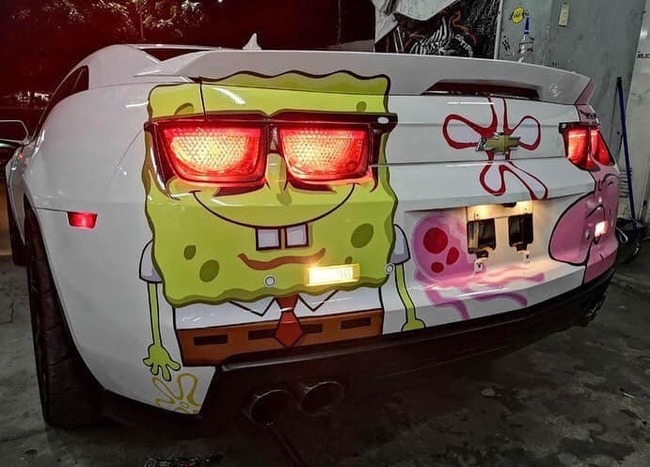
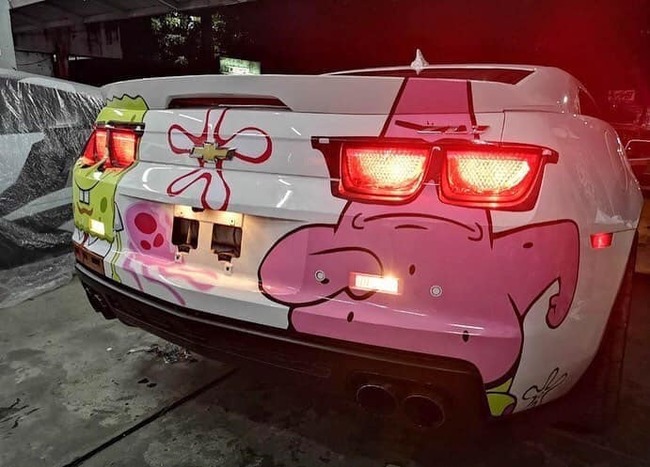
Пацан к успеху шел
В Казахстане женщина отдала свою Chevrolet Camaro в автомойку, и все вроде бы начиналось хорошо, если бы не 19-летний работник автосервиса.
Пацан решил прокатиться с ветерком, но врезался в ближайший забор.
Реакция хозяйки машины бесценна
Сотрудник автомойки решил покататься на мощном автомобиле клиента и разбил спорткар об ограду комплекса
Владелица мощного автомобиля оставила его на мойке “Брут кар”
В данном случае не повезло. Судя по видео с камер наблюдения, сотрудник автомойки решил воспользоваться случаем и покататься на мощной машине, в итоге он не справился со спортмоделью и протаранил забор, разбив и кузов автомобиля.
Была вызвана полиция, автомойщику 19 лет
(025/366) 25 декабря родился Луи Шевроле

Да, Луи Шевроле не дожил до расцвета маслкаров, и по факту не имел никакого отношения к классическому Chevrolet Camaro, но ассоциации заставляют меня призвать вас выпить сегодня за 6-ти литровый v8, за копеечный бензин и за отсутствие экологических стандартов.
История Chevrolet Camaro.
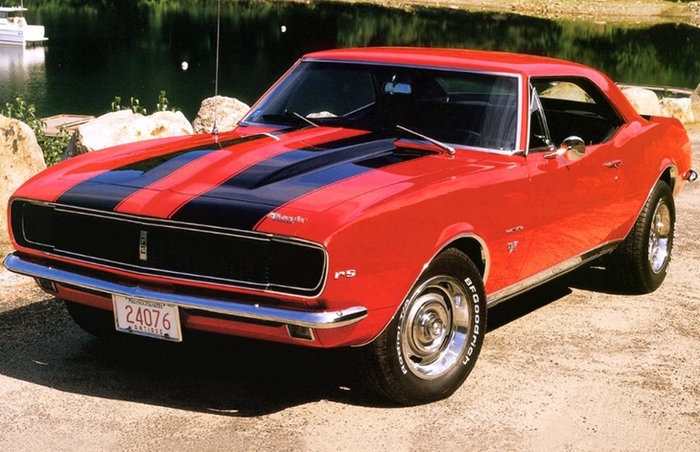
«Это маленький хищный зверек, питающийся мустангами» — именно так маркетологи компании Chevrolet шутливо отвечали на вопрос журналистов о том, что означает слово «Камаро». Заявивший о себе в 1966 году спорткар Chevrolet Camaro был настроен на борьбу с моделью Ford Mustang, образовавшим за пару лет до того момента новый класс автомобилей и зародивший культуру «пони-каров» — компактных заднеприводных двухдверных купе со спортивным нравом и приемлемым ценником. Так что юморной ответ достаточно полно охарактеризовывал предназначение новинки.
Следует упомянуть, что детище «Форда» не является родоначальником класса «Pony Car» во всех смыслах, ведь подобные автомобили были созданы и марками Chevrolet, и Plymouth немногим ранее. Однако именно красавец с жеребцом на решетке радиатора создал небывалый общественный резонанс благодаря своему темпераменту, стилю, идеологии и стал хитом, который уже за первые полтора года продаж преодолел планку в миллион реализованных экземпляров.
Chevrolet не мог сидеть сложа руки и наблюдать за невероятным успехом конкурента, поэтому задачей номер один в середине шестидесятых стала разработка автомобиля, способного достойно сражаться за долю нового рынка. И вот, наконец, 11 августа 1966 года в Норвуде, штат Огайо, свет увидел первый серийный Camaro, который положил начало эпохи легендарного автомобильного семейства.
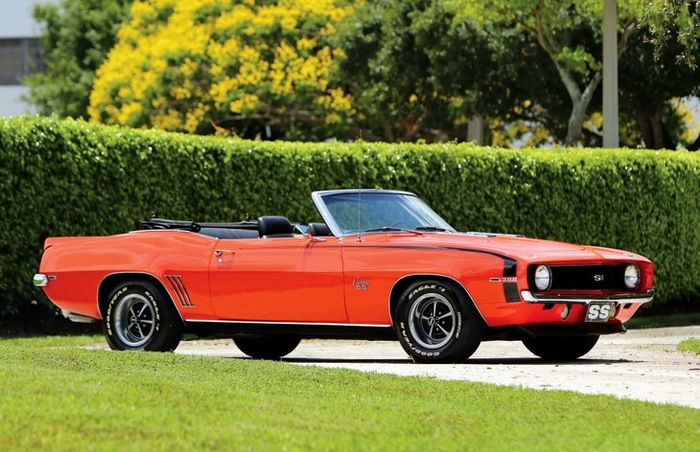
Самым доступным был «Камаро» с 3,8-литровым 140-сильным агрегатом с шестью цилиндрами, расположенными в ряд, и оснащенный трехступенчатой «механикой». Но такая «голая» версия была не слишком востребована, в то время как огромным спросом пользовались экземпляры с пакетами RallySport и SuperSport. Комплектация RS подразумевала под собой некоторые внешние изменения, самым заметным из которых был иной дизайн передка со скрытыми за решеткой радиатора фарами, а версия SS отличалась огромным 6,5-литровым мотором V8 мощностью в 325 л. с. (позже 350 и 375 сил). Интересно то, что эти два пакета можно было совместить в одном авто, получавшем, как ни странно, шильдик RS/SS.
Другим бестселлером была модификация Z28 c более спортивной подвеской, подкорректированным выхлопом, фирменными полосками на капоте и «восьмеркой» объемом 5,0 литров, выдававшей по паспорту 290 л. с., однако многие говорили о том, что показатель явно занижен и в действительности мощь этого зверя гораздо выше. На Z28 ставилась исключительно механическая коробка передач, в то время как для других версий был доступен и «автомат». А флагманом в линейке был «жареный» Chevrolet Camaro ZL1 c аж 430 «лошадьми» под капотом, который нередко участвовал в гонках на четверть мили.
Автомобиль выпускался с кузовами купе и кабриолет до 1969 года на двух заводах в США, также сборка моделей велась в Бельгии, Швейцарии, Перу, Венесуэле и на Филиппинах.
2 поколение, 1970–1981
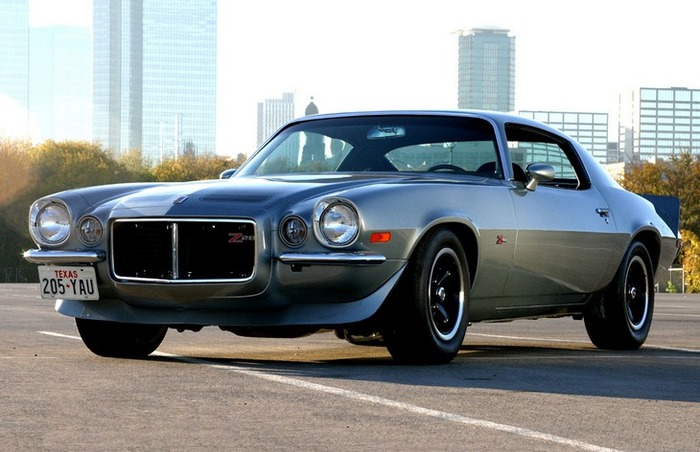
Chevrolet Camaro первого поколения производился до 1969 года, а в 1970 году борьбу за «место под солнцем» с «Мустангом» продолжил обновленный красавец на том же шасси. Вторую генерацию сотрудники «Шевроле» разрабатывали уже не впопыхах, а с толком и с расстановкой, поэтому авто получилось еще притягательнее предшественника, а шасси стало надежнее.
Важнейшим достижением этого «Камаро» стал тот факт, что в 1977 он опередил по продажам своего заклятого врага. Однако есть и менее позитивные моменты: перестала выпускаться версия с открытым верхом, а в 1975 году пропала из каталогов и модификация Z28, которая в этом поколении имела 360-сильного монстра в подкапотном пространстве и «выстреливала» до «сотни» за 6,5 секунд.

Заднеприводные купе оснащались рядными «шестерками» 3.8 и 4.7, двигателем V6 3.8, а также восьмицилиндровыми моторами объемом 5,0, 5,7, 6,5 и 6,6 литра. Коробки передач — механическая четырехступенчатая и автоматическая трехступенчатая.
3 поколение, 1982–1992

Производство «третьего» Chevrolet Camaro стартовало в январе 1982 года, и основополагающим принципом новинки стала экономичность. Дело в том, что в семидесятых годах страховые компании взвинтили ценники для мощных авто, а затем еще и имел место нефтяной кризис, и все производители машин были вынуждены урезать аппетит своих творений. Таким образом, самый мощный «Камаро» не дотягивал даже до 200 «лошадей», а базовый мотор и вовсе выдавал лишь 90 сил.
Помимо экономичности автомобиль мог похвастать очень симпатичным новаторским дизайном и хорошим оснащением, кроме того, в модельный ряд вернулась открытая версия. Приятной новостью для любителей скорости стало появление в 1990 году версии IROC-Z, которая приблизила спорткупе к его «мускулистым» предкам — двигатель, в котором обитали 230 «лошадок» разгонял машину до 100 км/ч за 5,8 секунд.
На третье поколение Chevrolet Camaro устанавливались четырехцилиндровый мотор 2.5, а также V-образные «шестерки» и «восьмерки» объемом от 2,8 до 5,7 литра.
4 поколение, 1993–2002
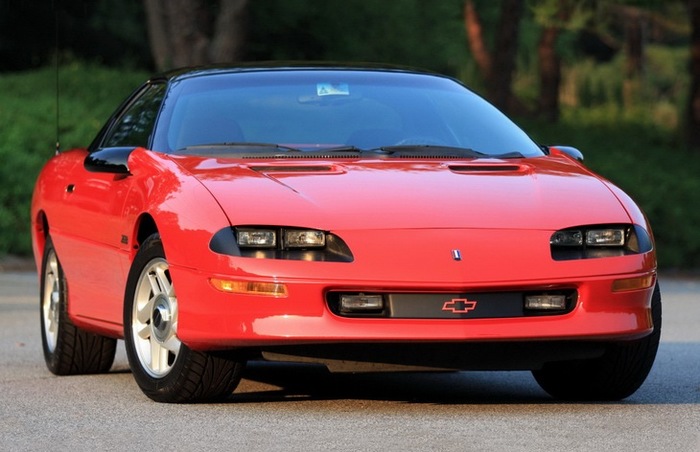
В 1993 году стартовали продажи автомобилей четвертого поколения, выпуск которых был организован на заводе в канадской провинции Квебек. Этот Chevrolet Camaro был приятен глазу и комфортен, богато оснащен и, что самое замечательное, вернулись моторы, сила которых заслуживала уважения.
Гамма силовых агрегатов состояла из двигателей V6 объемом 3,4 и 3,8 литра, а также мотора V8 5.7, их мощность варьировалась от 162 до 305 л. с. А особый интерес вызвали две ограниченные серии — в честь 30-летия модели в 1997 году была выпущена 330-сильная версия, а спустя пять лет и 345-сильная.

И как только Camaro начал восставать из пепла после кризисов и начинать новую жизнь, его поразил новый удар. В середине девяностых корпорация General Motors начала активно расширяться и создавать новые бренды, такие как Geo и Saturn и, не уследив за своим финансовым положением, к 2002 году была практически на грани банкротства, из-за чего пришлось отказаться от производства многих автомобилей, в том числе и Chevrolet Camaro.
5 поколение, 2009–2015

Пятое поколение модели Chevrolet Camaro дебютировало в 2009 году. Автомобили с кузовами купе и кабриолет выпускались на заводе в Канаде до 2015 года.
В 2012 году «Камаро» впервые официально вышел на российский рынок. У нас предлагались купе с моторами V6 3.6 (328 л. с.) и V8 6.2 (405 л. с.) в сочетании с шестиступенчатой автоматической коробкой передач.
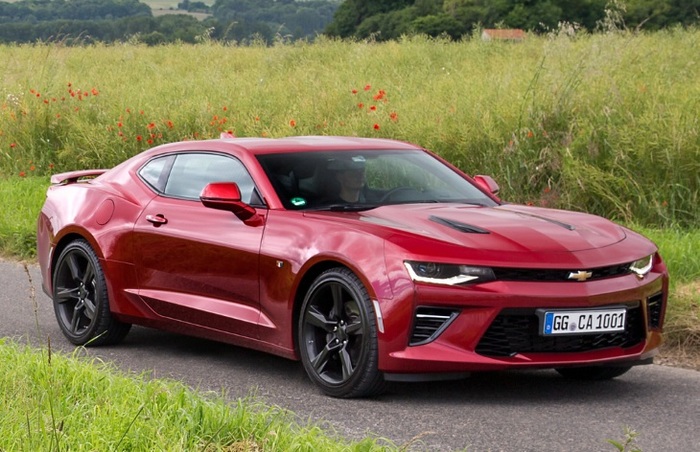
В субботу 16 мая 2015 года в Детройтском Бель-Иль парке состоялся первый официальный показ модели шестого поколения. Во время церемонии была организована выставка 25 лучших серийных, концептуальных и гоночных Camaro предыдущих поколений из запасников GM и частных коллекций. В конце октября первые Camaro начали сходить с конвейера, а в середине ноября они поступили в продажу в США как автомобили 2016 модельного года. В России модель нового поколения была представлена летом 2016 года.
Автомобиль создан на новой корпоративной платформе Alpha, но у Camaro более 70 % деталей новые, включая полностью новый интерьер, новые переднюю и заднюю подвески и силовой привод. Он стал немного меньше и легче, но сохранил все узнаваемые черты.
На всех моделях двигатели стандартно агрегатируются с шестиступенчатой механической коробкой передач, а по заказу возможна установка восьмиступенчатой автоматической трансмиссии.
THE CAMARO **
A PRECISION MACHINE IN EVERY WAY
8-speed
paddle-shift automatic transmission
engine
333/453
Reengineered. Redesigned. Rewarded.
For the sixth time in history, a unique formula of performance technology, meticulous design and engineering mastery have evolved the Camaro’s already proven DNA. The result? A truly modern force to be reckoned with. With two blockbuster powertrain options, an array of available connective technologies and a strong yet sophisticated design, the Chevrolet Camaro stands out in every way imaginable.
Читать еще: Шевроле авео т300 ошибка 89 что это
Leaner, faster, smarter
The only feature to be carried over to the sixth-generation Camaro from previous generations is the badge! 90kg lighter and more aerodynamic than its predecessor, the sixth generation features many performance-enhancing technologies like Magnetic Ride Control TM as well as two blockbuster powertrain options. A unique formula of performance technology and sophisticated design have evolved the Camaro’s already proven DNA into a modern iconic sports car. Meet the leaner, faster, smarter and more ferocious sixth-generation Camaro.
Aerodynamically sculpted to perfection
The evidence of hours of extensive wind tunnel testing can be found chiselled across the redesigned Camaro sports car. From the wider opening and precise draft angle of the grille, to the roof’s striking “Reverse Mohawk” channel, to the lift-reducing stanchion spoiler, the design of every surface and edge scrutinised until it helped improve airflow and performance.
Performance from the ground up
What happens when a lightweight platform joins forces with precision steering, a sophisticated suspension system and a full suite of performance technologies? You engineer a Camaro that’s up to 90 kg lighter and 28% stiffer than its predecessor, giving the driver a precise feel and connection to the road.
- Drivetrain
- Powertrain
- Architecture
- Cockpit
- Body
-
- All wheel options are lightweight aluminium
- Aluminium suspension components reduce unsprung mass for improved handling
- Brembo® brakes are standard on Camaro Turbo and Camaro V8
- The standard dual-mode exhaust on Camaro V8 changes sound with each of the four driver-selectable modes
- Camaro V8 is track-ready with auxiliary radiators, differential cooler and transmission cooler
- An 8-speed paddle-shift automatic transmission is standard on Camaro Turbo and available on Camaro V8, and includes a remote vehicle starter
- All-new architecture make the sixth generation Camaro more than 90 kg lighter vs. the fifth generation
- With a 28% increase in structural rigidity vs. the fifth generation, drivers will feel advantages like nimble, balanced handling and precise steering
- Enhanced Magnetic Ride Control TM is now standard on Camaro V8
- This advanced generation includes available 4G LTE Wi-Fi
- Air vents control temperature and airflow through rotational trim rings
- Soft, premium trim at driver touch points such as knee and elbow pads
- Functional hood vents on Camaro V8 help the 6.2L engine keep cool and reduce front-end lift
- The roof, seamlessly laser-brazed to shed mass, is reinforced by a “Reverse Mohawk” design
- The fastback profile widens rear fender flares, making the car look ready to strike
Driver mode selector
Driver mode selector
Customise your driving experience. Selecting between Sport, Tour and Snow/Ice and Track (Camaro V8 only) drive modes to configure up to eight different vehicle characteristics instantly.
Prepare to be heard
Standard on the V8 powertrain, the dual-mode exhaust system features quad outlets and electric valves that open and close the active exhaust. It’s tuned to allow peak performance at high speeds and aggressive idle, and a less aggressive presence at steady cruising speeds. Also, the Driver Mode Selector calibrates a unique exhaust note for each mode.
Uncompromising power and efficiency
Whatever your driving style, the Camaro has a powertrain option tailored for you. From the standard, fierce 2.0L Turbo to the available V8 powerhouse, learn why there are zero compromises of power or efficiency with any option.
The sports car’s mass savings allows the Camaro Turbo’s engine to put all of its 202 kW (275 hp) and 400 Nm of torque to work. Expect great efficiency, plus surprising cornering and braking – as well as 0 to 100 km/h in 5.9 seconds.
Fuel consumption combined (l/100 km): 12.8 – 8.0; CO2 emissions combined (g/km): 292 – 181
The 6.2L V8 catapults the automatic Camaro V8 from 0 to 100 km/h in 4.4 seconds flat – with 333 kW (453 hp) and 617 Nm of torque. With direct injection, variable valve timing and Active Fuel Management™.
Fuel consumption combined (l/100 km): 12.8 – 8.0; CO2 emissions combined (g/km): 292 – 181
Own the open sky
Own the open sky
From the fully automatic soft top that seamlessly disappears beneath the hard tonneau cover, to modular underbody bracing that allows for the same sharp, nimble handling as the coupe, the Camaro Convertible is a high-tech masterpiece. It even lets you raise or lower the top at the touch of a button while driving at speeds up to 50 km/h, or lower remotely with the key fob.
Technologically sophisticated
While the Camaro is loaded with performance technology, it also offers a surprising amount of modern driver-centric technologies like a head-up display, wireless smartphone charging 1 and Apple CarPlay TM 2 – each available and ready to upgrade the driving experience.
Next-generation Chevrolet MyLink 3 is controlled via an 8″, high definition center touchscreen.
The standard, configurable instrument cluster gauges can display 20 different screens including g-forces, lap time, drive mode, fuel and engine info.
When accessing this GM recall site, note that this site shows partner and contact information for US customers, please contact your Chevrolet Sales Partner or the Chevrolet European Customer Assistance Center for information on vehicles homologated for the European Union or Switzerland. Whilst GM will perform all Safety Recalls at no cost to any customer for any GM vehicle, certain Field Actions apply to European and other Region specification vehicles only. Please consult your Chevrolet Sales Partner or the Chevrolet European Customer Assistance Center.
When accessing this GM recall site, note that this site shows partner and contact information for US customers, please contact your Chevrolet Sales Partner or the Chevrolet European Customer Assistance Center for information on vehicles homologated for the European Union or Switzerland. Whilst GM will perform all Safety Recalls at no cost to any customer for any GM vehicle, certain Field Actions apply to European and other Region specification vehicles only. Please consult your Chevrolet Sales Partner or the Chevrolet European Customer Assistance Center.
** Models on this site are only available as pre-registered vehicles; please contact your closest dealership to inquire whether they have them in stock, and their available offer for that vehicle.
All data is for base models with standard equipment. The calculation of fuel consumption according to 2007/715/EU (NEDC) is based on the empty weight, measured in accordance with this directive. The addition of extra equipment may cause consumption and CO2 emissions to be slightly higher than indicated. The CO2 emissions data do not refer to specific vehicles and are not part of a commercial offer.
Safety features are no substitute for the driver’s responsibility to operate the vehicle in a safe manner. The driver should remain attentive to traffic, surroundings and road conditions at all times. Read the vehicle Owner’s Manual for more important safety information.
1 The system wirelessly charges one PMA- or Qi- compatible mobile device. Mobile phone must support wireless charging for functionality.
2 Vehicle user interfaces are products of Apple and Google and their terms and privacy statements apply. Requires compatible smartphone and data plan rates apply Android Auto™ requires a smartphone running Android Lollipop 5.0 OS or above; Apple CarPlay™ requires an iPhone 5 or later. Full lists of supported apps are available at Apple.com/ios/carplay and Android.com/auto. Please note that availability of apps may vary by market.
3 Purchasing cost for Apps and/or internet traffic data/roaming cost may occur. For further information visit Apps web page and/or the web page of the relevant mobile operator. Full Chevrolet MyLink functionality requires compatible Bluetooth®, smartphone and/or USB.Please note that not all trims, colors or options might be available in your market. Please check with your nearest Chevrolet Partner for availability.
Images shown include product details referring to the US or Canadian configuration and differ from the European products. Please visit your nearest Chevrolet Partner or to see the available product offering for your market.

